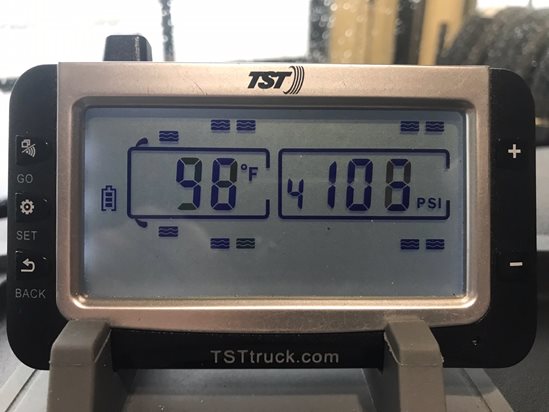
Today I would like to address the issue of where the rubber meets the road literally. Right behind the tread of our tire, there is air supporting our vehicles as we travel down the road. Checking and maintaining the air pressure in any vehicle that uses pneumatic tires is of the utmost importance. Having the proper tire pressure ensures proper wear, handling, and efficiency. There have been many “systems” to address the important maintenance issue of having the properly inflated tire.
Some of the early monitoring systems screwed on to the valve cap and would show if there was a tire below its required pressure. There are also systems that equalize the pressure between tires of a dual wheel application combined with a visual indicator of having adequate air pressure.
For years now there have been inflation systems of varying types which will automatically inflate a low tire. Finally, there are tire pressure monitor systems. Each of these systems has its advantages and disadvantages over the traditional way of checking tires with a gauge on each and every valve stem. Checking tires on a regular basis has been a struggle for an industry which relies on a massive quantity of tires. Even if you were able to check a tire on a daily basis an object could puncture a tire soon after the vehicle is moved.
For this reason, tire inflation systems were developed. About the same time, a tire pressure monitoring system was also developed to combat this daunting problem of having proper tire inflation. Let’s go into the advantages and disadvantages of both types of systems.
A tire pressure inflation system (TPIS) can supply enough air from the trucks air system to keep a tire inflated with a small leak. By the same token, a tire inflation system can also hide a small leak.
A tire pressure monitoring system(TPMS), on the other hand, cannot maintain a tire's pressure. What I personally like about a tire monitor is that it will alert me to a problem before there is damage done to the tire’s carcass. For myself, tire monitors are the answer as they do not cover up a problem and give me the peace of mind of knowing my tires are properly inflated completely through a shift of duty. If I have an alert to a low tire I am able to stop and evaluate the situation properly without causing any damage to the tire. With the available air from the truck if it is a slow leak I fill the tire and simply continue on to the next available facility where a complete and proper inspection can be made.
There are also tire monitoring systems today which can inform a fleet manager that they have a low tire. I believe this is a very good system in a drop and hook trailer operation as the manager will know there is a low tire long before sending a driver to pick up a trailer with a defective tire.
At the end of the day properly maintained tires are important to maintain a healthy bottom line while eliminating downtime maximizing up time.